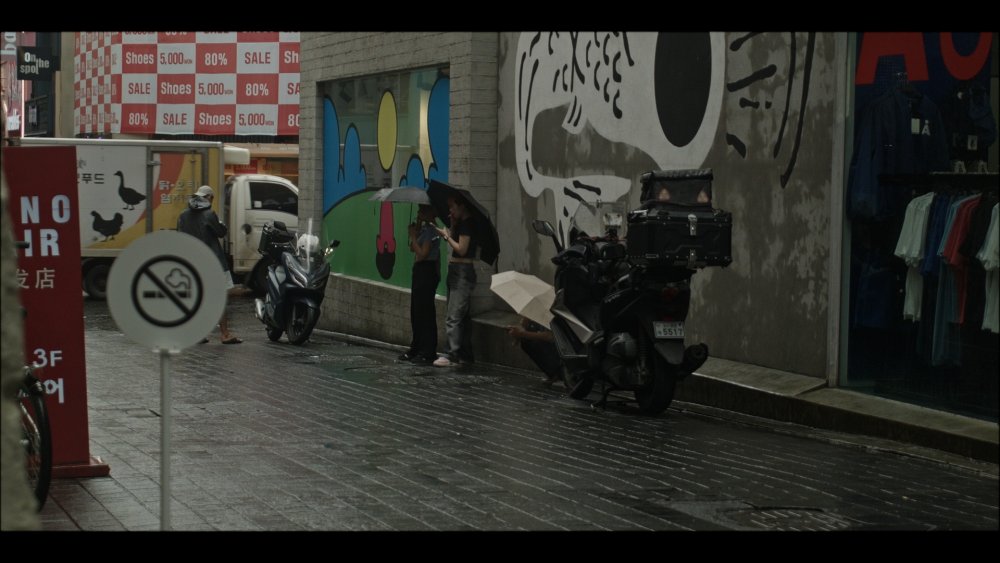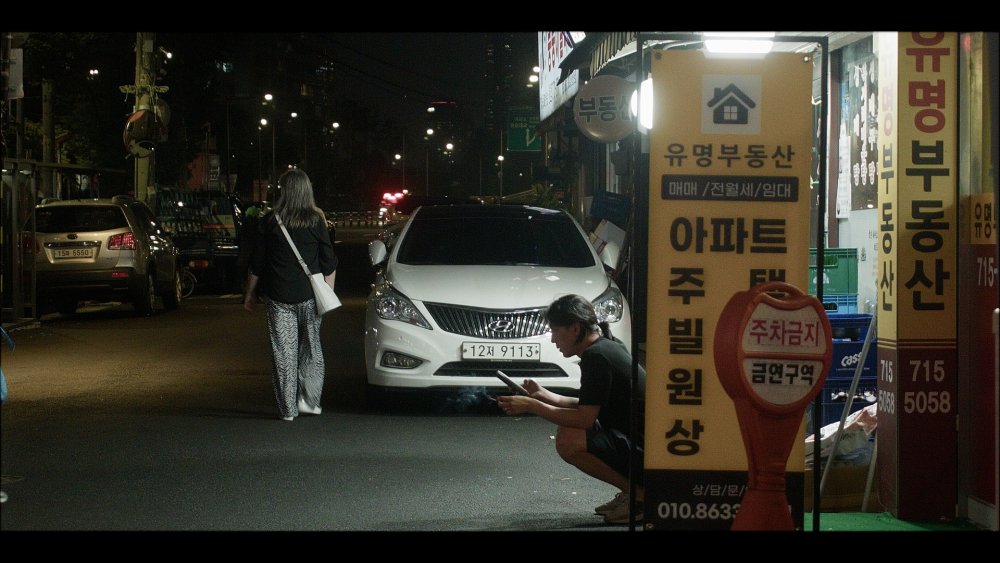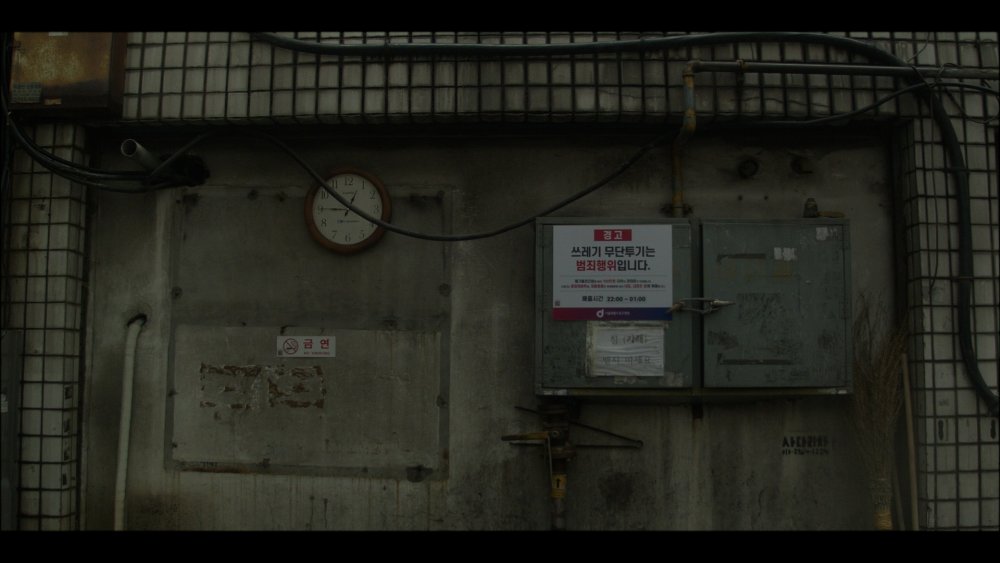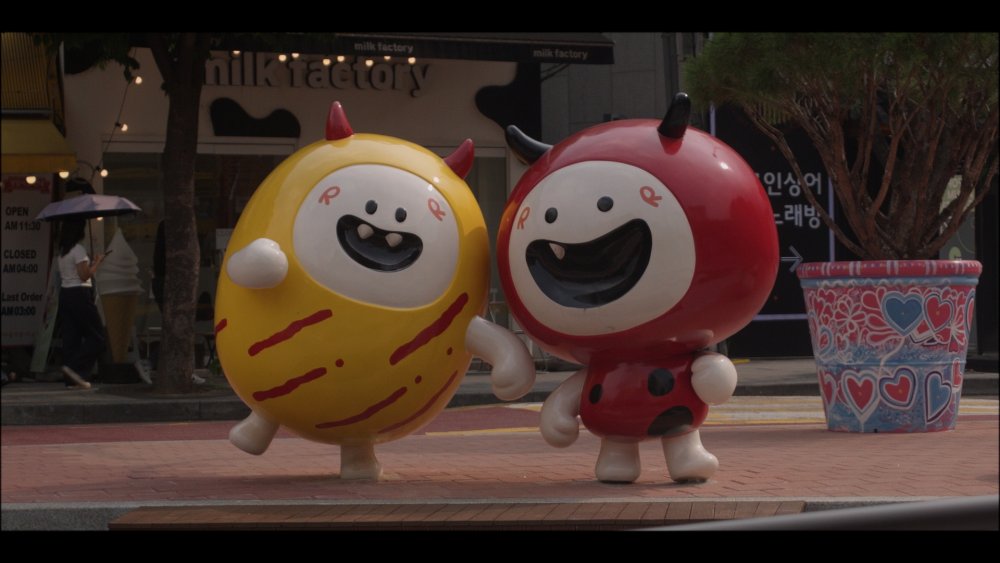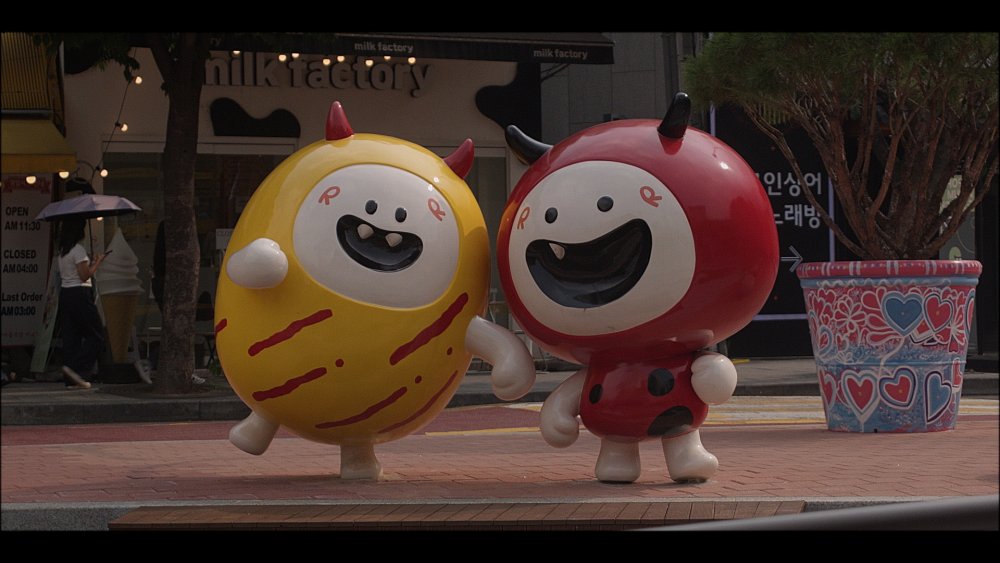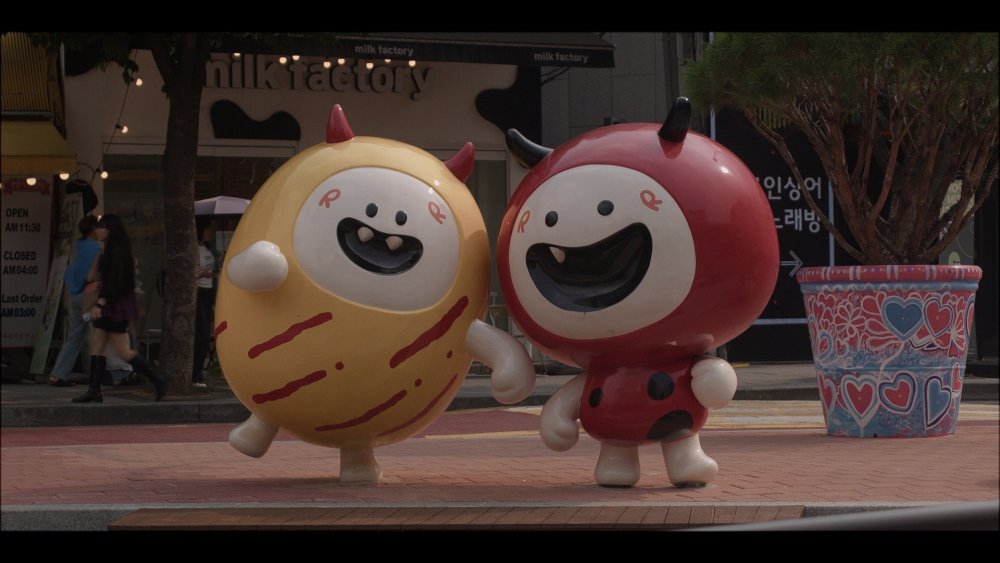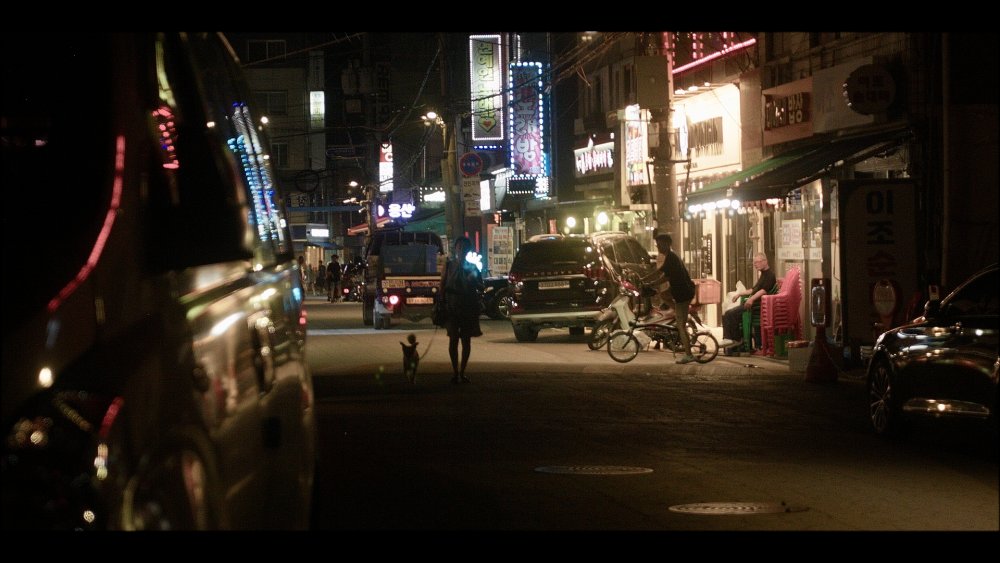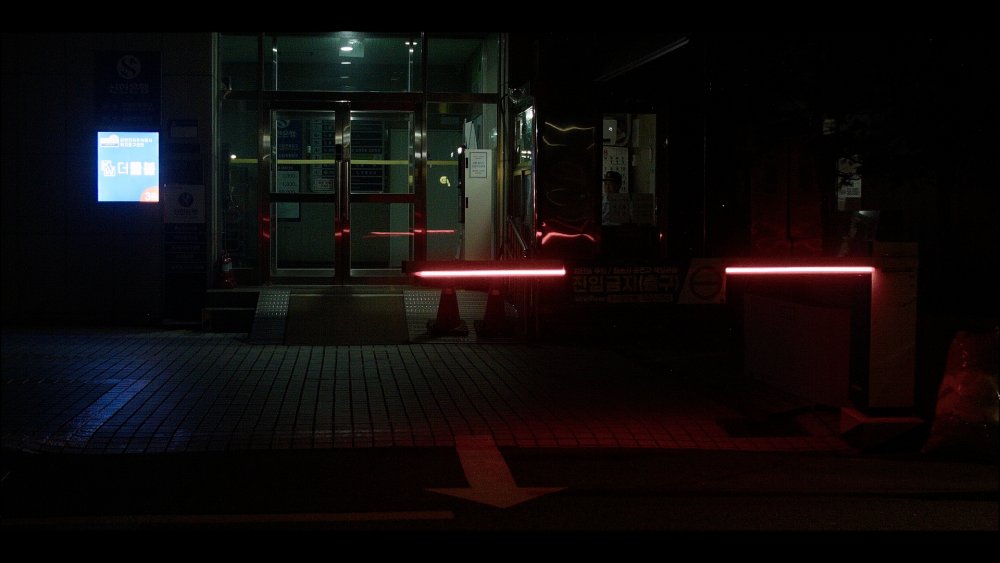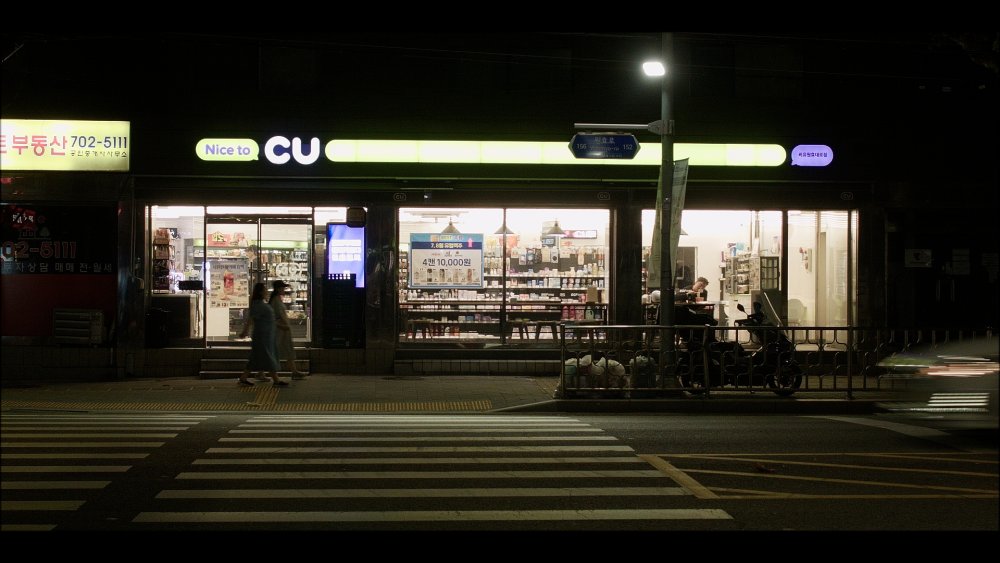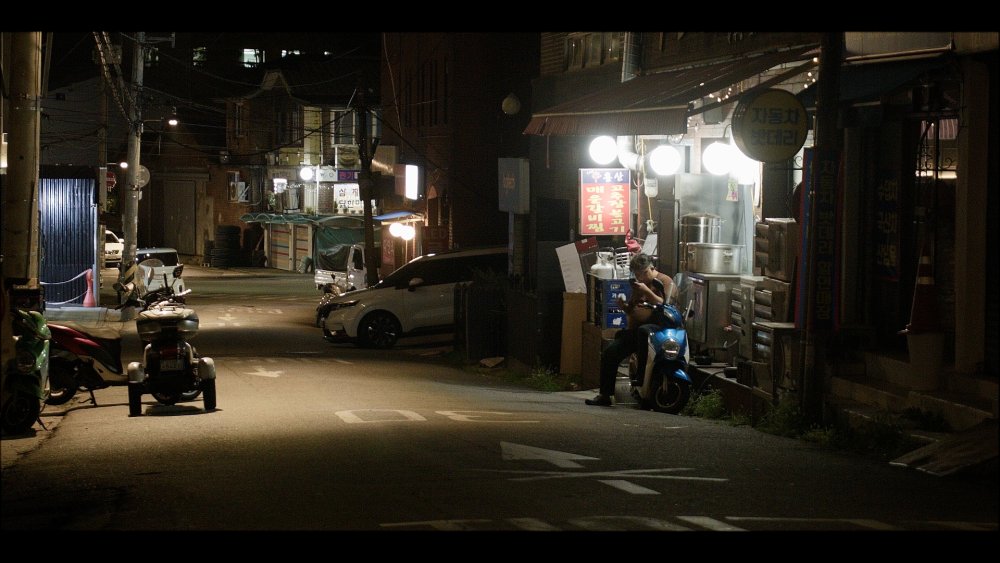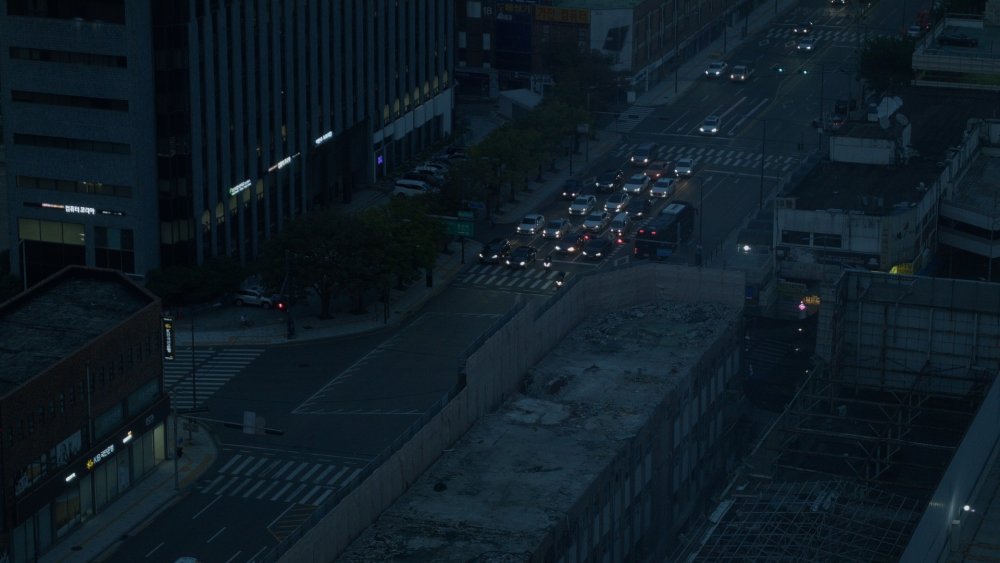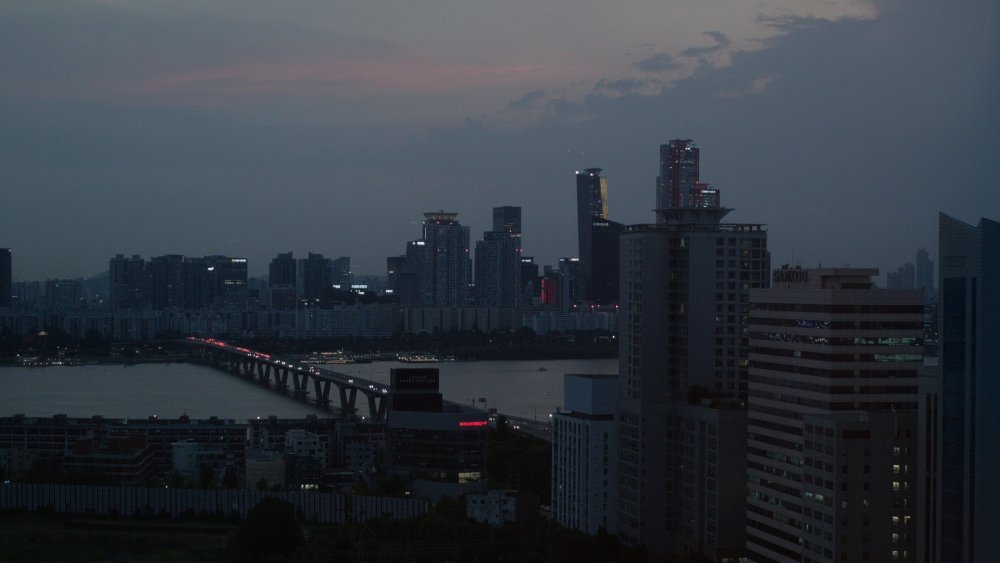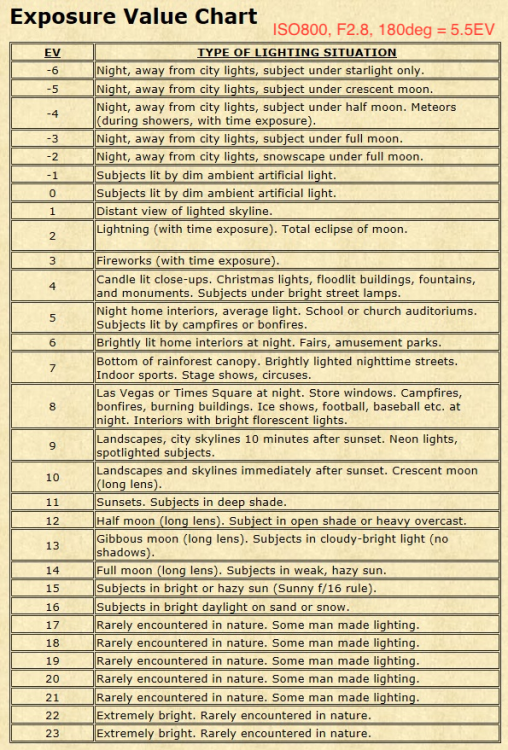-
Posts
7,995 -
Joined
-
Last visited
Content Type
Profiles
Forums
Articles
Everything posted by kye
-
I was the opposite - it was the hand-held shots in the car etc where I saw the jumping the most. That's why, to me at least, using a tripod for the buildings etc will fix those but still leave a gap for the in-transit hand-held moments. Thus my earlier reply about addressing that gap. This style of video is something I've been thinking about a lot for myself, and the way I see it is that to create some movement and contrast in the edit, I'd mix up pacing and subject matter such that there are in-transit shots, abstract shots, wides, teles, people, architecture, looking up, low-angles, high angles, shots with diagonals and leading lines, shots with lines horizontal and vertical lines (e.g. from looking at a building straight on), etc. I've also been contemplating an enhanced way to do the sound design too, so that it fits better with the edit.
-
Depending on your preferences, there might be benefit to testing some options for stabilising hand-held shooting as well as taking a tripod. For example you had lots of shots inside vehicles and while on the move, where a tripod isn't really practical. What I mean is that for things like IBIS, if you can reduce the shake from being just-too-much for the IBIS to instead where it is operating within its travel, you can cut out all that jumping/lurching that the IBIS does when movement is beyond its limitations. This might only require a reduction of (say) 30% of camera shake but could reduce the vast majority of shake-related issues in the resulting footage. Things to consider to stabilise hand-held shooting could include: Different ways you hold the camera (where your hands are gripping the camera) Different positions of your arms (e.g. shooting at belly height and pushing your elbows into your sides) Use of extras like wearing a camera strap and pulling the camera tight against it as a third point-of-contact Adding something small/foldable to the camera (table tripod sort-of thing) that can act as a stabiliser like an Edelkrone FlexTILT which can obviously act as a table tripod but can also act as a handle when hand-holding, or can even be extended backwards to form a shoulder-rig or pressed against the chest as a third point-of-contact You could even get a very compact/light travel tripod and hand-hold the camera with it attached, essentially using it as mass to make the rig heavier and larger. Alternatively, you could shoot much wider for such shots and then stabilise aggressively in post with a large crop. This risks having shake-related motion-blur in the shot that doesn't align to the post-stabilised motion of the final frames, but it can work in many situations. My approach is to use as much stabilisation as possible (ideally technique+rig+OIS+IBIS with post-stabe if required), so that all the mechanisms are operating comfortably within their ranges and will therefore create less artefacts and also allow more usable shots. For b-roll where no specific shots are critical, there's also merit in just shooting a lot and being pickier in the edit 🙂
-
Nice! I think the FLC is a bit of a game changer for trying to get higher-end looks with non-cine-cameras. You could get most of the same results doing things manually, but it makes it so much easier and faster to do that it really unlocks it. What lens(es) did you use?
-
Yeah, it's definitely geared towards remote control. For a run-n-gun setup, by the time you add the zoom demand, it's now larger than the P4K, which is truly saying something. I genuinely don't know what I'll do for my next trip, although the likely option is to keep the same setup as there's nothing out there that is better without also having massive downsides or a massive cost associated with it.
-
"I don't shoot coverage, I know what I am doing" 🤣🤣🤣
-
If you start with the desired aesthetic and then ask yourself what the equipment and settings are that creates that aesthetic, then you quickly realise that anything above 24/25/30p is a specialist tool. For me, 60p conformed to 24/25/30p creates an aesthetic that is surreal. If the subject motion is significant then it can pass for reality but through a highly intense emotional lens. I've seen shots that were 60p but didn't look unnatural in situations of extreme grief, shock, and euphoria due to love, drugs, or adrenaline. The aesthetic of 120p conformed to 24/25/30p is absolutely into the territory of a special effect. I filmed dozens of hours of footage from my kids sports games in 120p and am very familiar with the look, and it screams at the viewer that they're watching special effects footage. This is appropriate for heavily stylised content such as fight scenes or extreme action shots that take place outside reality, for example movies that are set in someone's mind or in virtual reality etc. 120p doesn't align with our senses observing our reality, except perhaps if there was an incredible amount of drugs involved. The other potential uses for 120p or slower is to see things that aren't noticeable to the naked eye. Documentaries showing animals doing thing very quickly like frogs shooting their tongues at bugs, birds diving into water to catch fish etc. This is a special effect but a useful one to extend our perception in time. The Slowmo Guys on YT make great use of this. The upgrade of a smartphone from 1080p120 to 4k120 is of almost zero practical use in film-making. Discussion of it at length outside of a very narrow niche can only be academic or fetishistic.
-
BM support replied, and yeah, no camera control from Video Assist units. "Unfortunately you cannot control any settings from the Video Assist units. The only controls a Video Assist supports is trigger recording. For the control functions you require, the options available are either through the ATEM control protocol, if you have one of our ATEM vision switchers, or you can use the REST API over USB Ethernet for external control via HTTP." Seems like if it can trigger start/stop then a protocol is there, so it should be possible for them to do it, but with the PYXIS monitor being over USB and therefore a completely different implementation it seems unlikely they'll convert the VA units to control their Studio series. I guess all hope for a tiny BM cine camera now lies in them releasing a new Micro model that uses the Pyxis monitor. This would be an incredible option actually, as the monitor has full camera control, it's nice and bright, is compact and light-weight, and draws power from the camera so no more duplicate battery situation. However, if you live in the real world then don't wait on a fantasy to come true.
-
It very much seems like segmentation in their product lines and development departments. The studio team created a range of cameras designed to be remote controlled and mixed etc, and they setup (what looks like) a comprehensive control system through the ATEM products. The "cameras that leave the building" team created the cinema camera range with screens and buttons, and the Video Assist range, and probably don't care their monitor doesn't have a way to control the hermit cameras from the other department. Definitely seems like a lost opportunity to have one camera be useful in both scenarios though.
-
Just read that thread, and yeah, it's a mixed bag. It seems like a great studio camera, but in an attempt to cost-cut or simplify or <insert some reason or other here> they hamstrung its ability to replace the BMMCC and be used outside the studio. Once again I'm reminded of the "industry blind spot" of camera size. If it's small then it's unnecessarily crippled, and if it's not crippled then it's physically large, and if it's neither then it's old and people are sitting around saying "they don't make them like they used to".
-
This looks like a great solution - you'd know by touch which button you're on. Awesome stuff! Pity it wasn't made more ergonomic from the factory.
-
Perhaps even more strangely, you can only have gyro enabled when OIS is disabled on the lens.
-
Interesting work-around but realistically for me, anything that makes me move from MFT glass will have to compete with me moving to any other camera system available, so it's a much larger investment for me and there's much stiffer competition involved. If I got the Video Assist can that control the camera? BM say "External Control: LANC, SDI and HDMI start/stop and timecode run." on the tech specs page for the Video Assist, which doesn't seem like "full camera control for all BM cameras". The camera page says: " External Control Blackmagic Zoom Demand and Blackmagic Focus Demand for controlling your camera and lens from tripod handles. Blackmagic Control Protocol over SDI and HDMI for external control when used with a compatible ATEM switcher with ATEM Software Control or ATEM Camera Control Panel. Includes control of some camera settings, focus, iris and zoom with compatible lenses, color corrector, tally and record start and stop to external media via USB expansion port. Camera Control REST API over USB Ethernet for external control via HTTP when used with REST client applications such as Postman. " If you search for "Blackmagic Control Protocol" then you get no hits that also mention the Video Assist units, so it seems like the answer is no. I've just emailed support asking so we'll see what they say. The more I look at this, the more that I think the options for replacing the BMMCC are either: 1) don't 2) wait for BGH1 to get updated with a GH7 sensor in it 3) GH7 4) some other camera system entirely, likely with significantly larger lenses
-
I have the BMMCC, and completely agree about the buttons being irritating beyond words. I set it up to be native ISO, 5600K WB, 23.976p, 180 shutter, and set the 12-35mm F2.8 lens to be at F2.8, and then there's no need to interact with the camera during use at all. Everything is done via the vND or lens focus or zoom rings. Occasionally I would run out of ND in very bright situations and so would stop down to F5.6, but that's a moment of fumbling every few hours of use, so not completely intolerable. If you can check I'd appreciate it. If there's no way to trigger an AF from the body then it makes it a non-AF camera or requires a pretty significant change to the rig. If it does allow it, I think I'd probably put a small dot of superglue on the button so it's easy to feel which is the right one.
-
Does anyone have one of these? If so, what do the buttons do in record mode? I'd assume that the Up and Down buttons adjust aperture, like the BMMCC does, but what does the SET button do? Hopefully it triggers the AF? I've read the manual and it doesn't mention it in there. If the SET button doesn't trigger the AF, can it be configured to do so?
-
Unfortunately, as someone who has exactly zero market segments catering even remotely to what I want to do, I have to go to the mountain rather than waiting for it to come to me. Pairing it with a VA seems a sensible move for a Resolve native like me. Obviously lots of details are still unknown and you'd want to look over the details before the rig was really optimised, but such a thing would make sense. I guess we'll have to wait to really get any solid info in order to evaluate it. Having the GH7 sensor in such a form-factor would make a lot of sense, and with some interface changes these two might be the BS1H and BG1H - the chassis look identical. I know a guy here in AU who does corporate stuff that just picked up a second BS1H to go multi-cam and he got it new for AUD1900 / USD1282. He'd been watching them like a hawk and kept seeing more and more deals and he held out pretty long and pounced at that price. I think that might have been from Amazon AU but can't be sure. My comment about the size comparison wasn't necessarily a criticism. If Panny built a camera that could handle the heat and data rates from a FF sensor and the physical stress of a professional standard FF lens mount and then just changed the sensor board over for the MFT one it's likely to mean that there's more engineering headroom than a purpose-built MFT camera might have. Anyway, this is all armchair daydreaming. My likely path is that I won't know what I want or have a clear idea of my priorities for a long time and when combined with my personal rule to not buy anything unless I have clarity, I won't be buying anything for a long time. Plus, the BMMCC is hardly a slouch, so the motivation to upgrade would be pretty low intensity anyway.
-
Let's say that someone wanted to use one of these in a minimalist rig. How would they do that? It appears to record internally to SD card, has a battery port on the back, and has many buttons and a wheel on top, so really it just needs a monitor? If so, it appears to have HDMI and SDI out ports, so a monitor that supported either of those looks like it should work? It's interesting that the MFT one is barely lighter than the FF one, although they're both quite light in the grand scheme of things.
-
Found this video the other day... turns out that Japanese camera company made a camera that catered to the Japanese, and (and this is the kicker...) the Japanese people liked it. Who knew? He talks about the S9 specifically at 1:25. The whole thing would be equivalent to GoPro making a camera for the US market, the US market really liking it, the US people buying it, and the Japanese people all talking in Japanese about how GoPro made a useless camera because no-one in Japan liked it. lol.
-

Gordon's Canon R6 II vs Lumix S5 II vs Sony A7 IV video quality comparison
kye replied to John Matthews's topic in Cameras
It just seems odd to me that people judge cameras or lenses by the resolution / sharpness. If you're interested in making quality finished edits, looking at 100% crops from a 6K sensor is about as relevant as an article discussing the shape and size and edge profile of the ridges in the rubber of the hand-grip. It's just disconnected from reality. -

Gordon's Canon R6 II vs Lumix S5 II vs Sony A7 IV video quality comparison
kye replied to John Matthews's topic in Cameras
None of them are sharp enough to make inane subject matter into thrilling content. I guess the engineers just need to work harder... maybe next year? -
Thanks! But realistically, what matters in film-making is story. If pretty visuals were all that mattered then all the mindless and forgettable action films would be winning oscars and changing the world..
-
Thanks! 🙂 The not-looking trick is definitely a good one. With hand-held stuff if someone was close by when I hit stop, I'd look up but look past them. It's an old trick but it makes people think you were shooting something behind them rather than them. I'd also just avoid pointing a camera directly at someone and framing up, so if someone happened to be quite close to me I'd just wait until they'd passed and then frame up. I also carried the camera around pointing straight down, which was comfortable to do but also clearly shows you're not trying to secretly film people. I'll admit I did sneak the odd shot here or there. These two for example were me filming people in-particular: I was mostly attracted to these people because they were smoking, which can look really cool on video if the lighting is right. In exploring the backstreets and laneways I came upon a laneway with about two dozen people smoking in it. It was a pretty long lane so far away from the main streets around it. It also had a clock on the wall, which I took a shot of because I thought it was funny to have a clock on the outside of a building, but I think it must have been where workers go to smoke and the clock put there by management to remind them not to take too long.
-
That's all I can think of for the moment, and I'll take a long time for me to digest what I do with this info. One final observation was how hot the camera got. For the unfamiliar, the BMMCC has huge grills on each side for the integrated fan (and as one of the smallest cameras on the market it really shows there's no excuses) and for those who haven't experienced it - it pumps out hot air the whole time! I previously mentioned that the camera was exposed to sweaty conditions, which was absolutely true (I was drenched with sweat basically the whole time I was outside) but part of that was that the camera was this little hand-warmer blowing hotter than normal air on my hands. This really gave me an appreciation of how serious the challenge of camera thermal management is. I'd suggest that technology has likely gotten better since they made this camera, but the amount of data processing has also gone up, so perhaps that evens it out - I don't know. It made me appreciate that I didn't need to worry about other cameras that may well have overheated in these conditions. The heat this gives off, combined with the deep shadows and moody images from shooting in the rain, really made me think this would be a great camera to shoot with in winter. Not only would the images be moody and cinematic, but it would keep your hands warm!
-
Grenade #6: I worked out how to sharpen and process the footage. Prior to the BMMCC, I've previously only shot with cameras that sharpened (over sharpened) their footage. This is the GF3, 700D, XC10, GH5, and GX85. I got good at blurring the footage to get a nice level of sharpness (a level of sharpness that only the pros seem to be able to achieve - amateurs seem to want to slice everyones eyeballs - maybe it's self-loathing over not being skilled at using their NLE?) but I could never work out how to sharpen up RAW footage and footage from the OG BMMCC and BMPCC. In retrospect I really don't know why I couldn't do this, and it sort of seems silly now, but it was a barrier to my ability to do what I wanted with the footage. (It's not that I wanted to over-sharpen the footage, but in order to grade optimally you need to be able to go too far in order to choose the right amount of something.) Push push push.... More more more!! High-end smartphone look achieved!!
-
Grenade #5: OIS with a good implementation is mostly good enough. I'm used to IBIS and more recently Dual-IS (which is IBIS and OIS combined) and had previously shot with OIS-only and disregarded it because it doesn't stabilise roll. I'm also used to the 'tripod mode' on the GH5 which maintains a motionless frame with the IBIS like it's locked-off, which I missed on the GX85 which gives a bit of a floaty image. The BMMCC maintains a very steady frame with the OIS, but doesn't fight you if you want to move the frame, so it creates still compositions but also allows smooth movement. I can still tell from the footage when I was tired or low in blood-sugar or just generally struggling - it was over 30C / 86F and 70% humidity, so pretty demanding on the arms to hold a very small and lightweight camera perfectly still for hours and hours. To counter the roll motion, I took to using my left hand to 'cup' the camera and lens and put my thumb up onto the side of the monitor, which helped stabilise any roll motion / jitters. It didn't work perfectly, as in this orientation any rotation of my forearm translates to roll motion in the camera, but for the most part the jitters are small enough that using stabilisation in post can clean them up almost perfectly. There was still a bit of sudden-blur on the odd frame here or there where there was motion-blur while the shutter was open, but considering the subject matter is a large city with the grunge and grit as well as the glitz and glamour, it's aesthetically appropriate.
-
Grenade #4: Low light cameras and lenses aren't strictly needed. This was a surprise, but ISO 800 and an F2.8 lens is (almost) all you need, even for low-light situations. The BMMCC has an ISO 1600 mode, but I did a side-by-side and the 1600 shot was still noisier than the 800 shot even after it had been darkened by a stop in post to match exposure. The BMMCC is a pretty noisy camera though, and I did ETTR whenever I could. For the really low-light situations I ended up taking off the vND, which is still something like 1-stop when at its lightest setting, but even that wasn't needed for most situations. The secret to making this combo work is to actually have blacks in the frame. This seems to be something that only professionals do now, amateurs all have milky shadows for some unknown reason - perhaps they think they're emulating film when in fact film would crush your blacks faster than the YT comments section will crush your dreams. These are all shot at ISO 800, with me cheating an extra stop by going to a 360 shutter. After doing that cheat, I ended up dropping exposure significantly in post on most shots, so I probably didn't need to cheat that much: These are also shot at ISO 800, but might have been with the 50mm F1.2 prime I also took with me, and were tripod shots: (These last two shots also had a WB change in post to get the cool tones, but most of the other shots I've posted had no WB changes in post at all) I am contemplating an 85mm F1.4 prime to give extra reach for very low-light situations but it's a pretty speciality thing. I also took with me the 7.5mm F2, 17mm F1.4 and 50mm F1.2 primes. The reason I took these is specifically for very low-light situations like going to a look-out at night and wanting to capture the city lights cleanly and get a little bit of exposure on the things they're illuminating rather than simply getting a black frame with individual pixels lit up by the lights directly. Having a dual-ISO camera would really simplify this, because if the second native ISO was 2.5 or 3 stops above then the F2.8 lens would turn the T2.8 exposure into a T1.0 or T1.2 exposure which makes a big difference into reaching into the blackness. Here's a table of common scenarios, where ISO 800 at T2.8 and 1/50 shutter speed = exposure value of 5.5: As you can see, lots of night situations you'd find yourself in are brighter than the 5.5 with 6 and 7 being common night situations. The other thing to take into account is that 5.5EV is probably better than most of us can see at night with our eyes, so if it's too dark to film, you might not be inclined to be there in the first place (unless you enjoy walking down dark alleyways in foreign cities at night with expensive camera gear).





